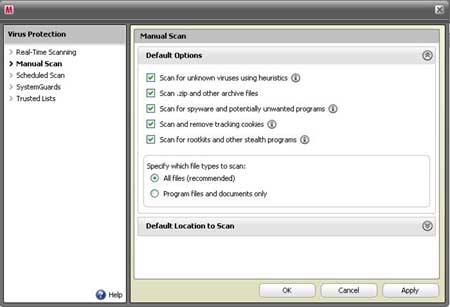I’m minding my own business and McAfee wants to “Update”. I think this is a simple update of the virus database and even though I am very busy doing something else, I go for the update. So of course, without warning, I am treated to a monster update of the entire McAfee program, complete with all kinds of FUD links that lead to very poorly executed landing pages. Terrible customer experience, and that’s what I was going to post about. But since everybody probably sees the same thing all the time, I think the following sequence will be much more interesting.
Being a web analytics freak, about 30 minutes after the install, I checked out the way the new McAfee program handles cookies. You guessed it:
(click on any of these images for bigger pic)

“Scan and remove tracking cookies” is automatically activated on install. Then I go into the “Quarantine” section and here is what I find:

All my “tracking cookies” have been Quarantined. Certainly looks like all the major ad-serving networks are represented, and what looks to be a bunch of Overture conversion cookies.
This cookie crunching doesn’t mean much to me because I don’t build any very important (KPI level) metrics using “Unique Visitors” as a base. For one thing, I was doing web analytics before cookies were pervasive and I’m comfortable using “Visits” or “Sessions” as a base (Sales per Visit, for example, as opposed to Sales per Unique Visitor). The other reason is that you simply cannot get an accurate Unique Visitor count, meaning there’s a lot of “noise” in the number. I don’t like basing key performance metrics on a noisy base number, it’s asking for trouble. And it appears this cookie situation will be getting worse over time – worse than it already is with all the anti-spyware scrubbing of cookies, the firewall problems, and so forth.
Yet I know a lot of people base everything they do on Unique Visitors because it “makes more sense to management” and it’s “more logical” and so forth. Fine. Here’s what is going to happen. The cookie block / erase / quarantine problem is going to artificially increase the number of Unique Visitors you are getting to the site. You’re not getting more, it will just look like you are due to loss of tracking at the Unique level. This means Sales per Unique Visitor, for example, will start falling over time even though in reality, based on actual Unique Visitors (which you can’t measure) it may be staying the same or rising.
My advice to you is to start shadow tracking now using Visits or Sessions as the base in your most important metrics, the ones you are on the hook for. You don’t have to show them to anybody, just keep track of them in Excel or something and note the trends. Then when you start seeing your Unique Visitor based metrics collapsing on you, you can whip out the Visit / Session based metrics and say, “See! See! It’s really not happening! We’re doing much better than you think!”
Makes more sense to management, indeed. Until you try to explain why Management should now believe your Visit-based metrics instead of the Unique Visitor based metrics. Good luck on that one.
(Note to Ron: This subject makes me very Cranky, could you tell?)

